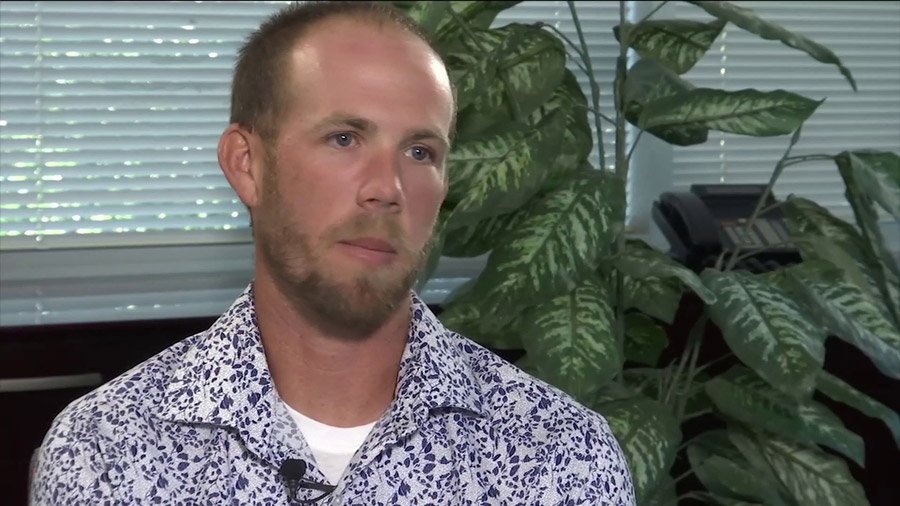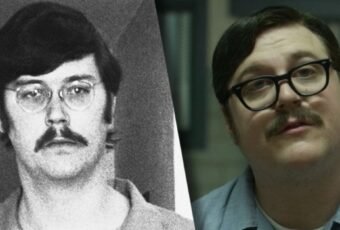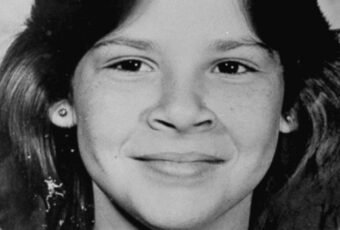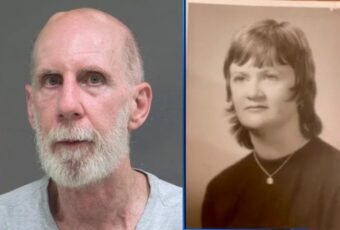The disappearance and murder of Bonnie Haim is a heartbreaking story of domestic violence that went unsolved for over 20 years. Though her young son immediately implicated his father in the crime, police initially lacked the evidence to make an arrest. It would take two decades before Bonnie’s remains were finally discovered in her backyard, leading to a conviction at long last. This case is a powerful reminder to always take claims of domestic abuse seriously, no matter the victim’s age.
Bonnie Haim’s Story
Bonnie Guy grew up in a tight-knit family in Jacksonville, Florida. Known for her bright smile and fun-loving personality, Bonnie dreamed of becoming a nurse. At age 18, Bonnie met Michael Haim and was drawn to his charisma and sense of humor. The two began dating and Bonnie became pregnant at 19.

Although some concerns were raised about Michael’s temper and immaturity, Bonnie married Michael Haim soon after discovering the pregnancy. In 1989, Bonnie gave birth to a son named Aaron Fraser. As a mother, Bonnie doted on Aaron and devoted herself to raising him in a happy, stable home.
However, major problems soon emerged in her marriage to Michael. Haim had trouble holding down jobs and was prone to angry, abusive outbursts often fueled by alcohol. Still, Bonnie held out hope that the man she loved could change for the better.
According to Michael’s aunt Eveann, he was often abusive to Bonnie: “One day they got into an argument… in the parking lot. And she came in crying and he had slammed her hand in the door and her nails were broke and she was very upset at that point.”
Bonnie Haim’s Disappearance
By January 1993, Bonnie realized her marriage was broken beyond repair. She had enough of Michael’s unstable behaviour and the constant fear it caused. Bonnie made plans to move into an apartment with 4-year-old Aaron while initiating divorce proceedings against Michael.

Tragically, Bonnie never got the chance to leave her dangerous home life. In the early morning hours of January 7, 1993, Bonnie mysteriously disappeared from the Haim family home. When questioned by police, Michael claimed his wife had left voluntarily after a fight. However, young Aaron told a very different story.
Aaron told police officers that “Daddy hurt Mommy” and that his father had buried his mother in the backyard. Unfortunately, detectives found no evidence to corroborate Aaron’s claims. With Bonnie’s body still missing and no witnesses, police were unable to build a case against Michael Haim.
The night before she disappeared, Bonnie called her friend Eveann in tears: “She was crying and she was upset. I asked why, she said that she and Mike had gotten into a discussion.” It was the last time anyone heard from Bonnie.
Legal and Investigative Challenges
The early 1990s presented many challenges for law enforcement investigating a case like Bonnie Haim’s disappearance.
Forensic DNA analysis was still in its infancy, making it difficult to identify remains or trace evidence back to a suspect. Limited technology also hampered efforts to recover buried evidence. Police lacked the sophisticated ground-penetrating radar and cadaver dogs that could have located Bonnie’s body.
Moreover, domestic violence was not fully understood or prioritized by police at the time. Officers lacked specialized training to detect warning signs or learn from behavioural patterns. Treatment of spouse abuse as a private matter made police reluctant to intervene without hard evidence.
Procedurally, a case couldn’t proceed without a victim’s body or testimony. With no evidence of Bonnie’s death, prosecutors lacked grounds to charge Michael Haim despite Aaron’s eyewitness account.
Ultimately, investigative limitations coupled with social attitudes prevented justice until both forensic technology and legal practices evolved.
Aaron Fraser Knows the Truth
Though only three years old at the time of his mother’s murder, Aaron Fraser had an unsettling awareness of the tragedy. As he matured, his understanding of the injustice against his mother became more concrete. He believed that his father had gotten away with murder.
In 2014, now in his late 20s, Aaron Fraser acquired his childhood home in Jacksonville, Florida. Long driven by the belief, rooted in his childhood memories, that his father was responsible for his mother’s disappearance, Aaron faced an unexpected turn of events. During renovations on the property, he struck something in the ground, leading to an accidental yet pivotal discovery.
He unearthed human remains, which DNA testing conclusively identified as those of his mother, Bonnie Haim. This grim finding, initially unintended, horrifically confirmed his worst suspicions and brought Michael Haim’s heinous crime to light
Impact on Aaron Fraser
After his mother’s murder, Aaron initially lived with his aunt Liz Peak before being adopted by the Fraser family, who later changed his name to Aaron Fraser. Separated from his biological family, he was raised by these non-relatives
Experiencing such intense trauma at a young age inevitably took a major psychological toll on Aaron Fraser. He has been in therapy ever since, suffering from depression. Aaron endured over 20 years of uncertainty about his mother’s fate before he discovered her skeletal remains in the backyard of his childhood home.
Research indicates that children who experience domestic homicide involving a parent may suffer from PTSD, anxiety, depression, and anger issues. Aaron exhibited many of these symptoms, including emotional distress, sleep disturbances, and difficulties in relationships. However, by holding onto memories of his mother’s love, Aaron found the resilience to persevere. His determination to find Bonnie was driven by a refusal to let her memory simply fade away.
The discovery of Bonnie’s remains allowed Aaron to begin processing and alleviating some of the psychological burden he had carried for so long. This breakthrough provided validation for his pain and a sense of purpose in his quest.
Building a Case Against Michael Haim
Equipped with the discovery of Bonnie’s remains, Florida prosecutors were now confident in building a strong case against Michael Haim. In 2015, he was arrested and charged with the second-degree murder of his wife, Bonnie.

During the investigation, a spent .22-caliber shell casing was found in Bonnie’s grave. Michael Haim owned a .22-caliber Marlin Model 60 rifle, which had been taken as evidence in 1993 and later returned to him.
Prosecutors alleged that Michael shot Bonnie during a heated argument in 1993, then buried her body in the backyard while their young son, Aaron, slept inside the house. Aaron, then only a child, unknowingly became the sole witness to the aftermath of his mother’s murder.
Further investigation revealed that Bonnie had been planning to leave her abusive husband. She had opened a separate bank account and secretly saved $1,250 through a friend. Bonnie had also made deposits on two apartments in Orange Park, planning to move out on January 23, 1993, when Michael was scheduled to be away on a business trip.
However, on January 6, 1993, Bonnie called a relative to cancel their evening plans, citing an argument with Michael about their marriage. This was the last time anyone heard from her.
The discovery of Bonnie’s remains and the .22 caliber shell casing provided crucial evidence that supported Aaron’s childhood testimony. The remains helped police reconstruct Bonnie’s final moments, indicating she had been killed by a gunshot, likely from Michael.
Michael Haim Stands Trial
In 2019, Michael Haim finally stood trial for the murder of his wife Bonnie over 25 years earlier. Now in his 50s, a balding Michael Haim showed little emotion in the courtroom.
When asked by his defense attorney Tom Fallis if he harmed Bonnie, Michael responded: “Absolutely not. I loved my wife, and I would never hurt my wife.”

The jury heard extensive arguments from both prosecutors and Haim’s defence team. The state presented Bonnie’s uncovered bones as irrefutable proof that Michael had buried the person he killed. Forensic experts testified that markings on the bones matched wounds caused by a shotgun blast fired at close range.
Michael Haim’s lawyers tried to argue that Bonnie could have been accidentally shot during a struggle over the weapon. They asserted Haim had panicked and buried the body, fearing he wouldn’t get a fair shake from the police.
But prosecutors presented Bonnie’s diary entries documenting years of violent threats and abuse she endured from her husband. The jury saw Haim’s claims of the accident as implausible given the evidenced history of domestic turmoil.
After five days of testimony, the jury found Michael Haim unequivocally guilty of second-degree murder. In April 2019, Michael Haim was sentenced to life in prison for Bonnie’s death.
Haim’s defence team filed an appeal of the verdict, questioning the admissibility and validity of the DNA evidence from Bonnie’s remains. However, the appellate court upheld the conviction, cementing Michael Haim’s fate.
Aaron Fraser’s Relief
Aaron Fraser shed tears of bittersweet relief following Michael Haim’s conviction. Despite the horrific memories the trial dredged up, Aaron was grateful he could finally get closure for the mother stolen from him so young.
Aaron spoke of the sheer joy of seeing his mother’s killer brought to justice. Yet he laments Bonnie missing out on decades of his life and not getting to become a grandmother. Aaron plans to continue honouring Bonnie’s memory and helping other domestic violence victims.

Though the trial was emotionally taxing, Aaron has found solace and inspiration in once again validating his childhood recollections. His incredible determination as a 4-year-old led to crucial testimony that cemented Haim’s guilt 26 years later.
The Bonnie Haim case is a sobering example of domestic homicide and its traumatic aftermath. For over 20 years, Bonnie’s loved ones agonized over her unknown fate.
Bonnie’s father doubted the reliability of Aaron’s eyewitness testimony: “The credibility of a child is something that you have to judge in perspective. He’s said a couple of things that we know were not true. Mom’s car is in the lake. We know her car wasn’t there.”
But the lead detective believed Aaron completely: “From what Aaron told us that day, my only conclusion was that there had been a domestic fight and that Michael Haim had killed his wife and had removed her, and that their three-and-a-half-year-old son Aaron Haim had witnessed this.”
Thanks to Aaron’s commitment, Bonnie’s voice was finally heard. Justice delayed is still justice denied, but today Bonnie Haim can finally rest in peace.
Read more from the website:










